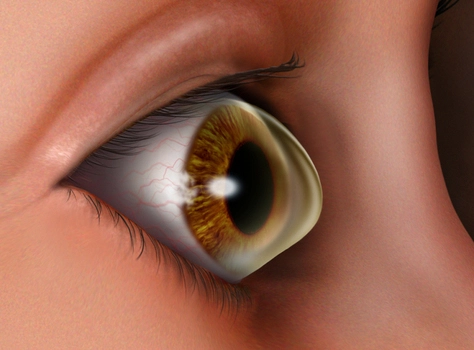

Cornea transplantation in Shiraz, Iran is an excellent option for people who suffer from corneal problems and are looking for effective solutions to improve their ability to see. Shiraz is distinguished by the presence of advanced medical centers and highly experienced doctors in the field of corneal transplantation, ensuring the provision of the best medical services and the latest surgical techniques. Operations are performed in a fully equipped environment, with an emphasis on patient safety and achieving the best possible results. Attention to detail and dedicated care by the medical team gives patients confidence and comfort during the treatment period. Shiraz also provides precise post-operative follow-up programs to ensure that recovery proceeds as desired and that the highest levels of patient satisfaction are achieved.
| Highest price | Average Price | Lowest price | Country |
|---|---|---|---|
| 3000 USD | 2500 USD | 1900 USD | Iran |
| 150,000 USD | 10,000 USD | 7000 USD | Saudi Arabia |
| 28,000 USD | 20,000 USD | 13,000 USD | America |
| 30,000 USD | 25,000 USD | 15,000 USD | Canada |
| 16,000 USD | 11,000 USD | 7500 USD | Emirates |
A corneal transplant is a surgical procedure also called a keratomileusis operation. A person whose cornea is diseased or damaged is likely to experience vision loss and other symptoms. In a corneal transplant, part of the patient's cornea is replaced with healthy corneal tissue from a donor.
You need a corneal transplant for several reasons, including:
Damage or injury: If the cornea is injured or damaged due to an accident or direct injury, it may lose its transparency or become distorted, causing Affects vision
Corneal diseases: Some diseases such as keratoconus (where the cornea becomes cone-shaped and loses its flatness) or cloud cornea (where it becomes The cornea is not transparent due to deposits, which can greatly affect vision
Cornea failure: In some cases, the cornea may fail after previous eye surgery, such as LASIK, requiring a corneal transplant To restore vision
Recurrent corneal abrasion: Some people suffer from recurrent corneal abrasion, which can lead to vision loss and persistent pain
Infection: Infection that does not respond to treatment may lead to permanent damage to the cornea, making a corneal transplant necessary
Improvement of vision: In some cases, a corneal transplant is performed to significantly improve vision, especially when prescription glasses or Contact lenses are effective in correcting vision
There are several different factors that affect the final cost of a corneal transplant. Each of these factors can be different for different patients. Therefore, there is no specific and fixed cost for all patients. Below we mention the factors that affect the cost of this treatment process.
Eye surgeon salary
Anesthesia cost
Cornea examination price
Cost of ophthalmology hospitals in Iran, Shiraz
Amount required for medications
(DALK): Deep anterior keratoplasty
(SALK): Superficial anterior keratomileusis
(DSAEK and DMEK): Internal transplantation of corneal cells
Total corneal replacement:
In deep anterior corneal transplant surgery, the top three layers of the cornea are removed and replaced with other layers From an organ donor, resulting in a partial thickness cornea replacement. This surgery gives 90% of patients the ability to see, allowing them to drive vehicles, but they may need to wear glasses or contact lenses, or they may need to undergo another surgery. Complete recovery from this surgery may take up to 18 months. Corneal transplant surgery (deep anterior corneal transplant) carries some risks, but serious complications are rare. The patient's body may also reject the new cornea, but this happens in less than 10% of cases within a period of two years after surgery. This condition is easy to treat because the rejection of the new cornea does not affect the inner layers of the cornea. The risk of deep anterior corneal transplant surgery is usually low.
However, this type of corneal transplant surgery does not achieve excellent vision as is the case with complete corneal replacement surgery
In corneal transplant surgery, the inner layer of the cornea is replaced with a layer from an organ donor, and it is inserted through a small incision without the need for surgical suturing. The majority of patients' vision improves after this surgery so that they can drive vehicles, sometimes with the help of eyeglasses. The recovery period may take up to 6 months until the results appear clearly. This type of corneal transplant surgery is new and causes less serious complications, including rejection of the new corneal layer, failure of the transplant, glaucoma, or change in the location of the transplanted layer, which may require reattachment with air during a simple procedure under local anesthesia. Surgery provides a shorter recovery period compared to a full corneal transplant, due to the small incision required to perform it and the lack of need for surgical suturing, which means that no
Resulting complications such as astigmatism, suture tear, or infections.
Total corneal replacement gives about 75% of patients vision that allows them to drive vehicles, and they may need glasses or other subsequent surgery. The recovery period for complete improvement of vision extends to about 18 months. The risks of this surgery are rare, although they are serious and threaten the safety of vision, including rejection of the new cornea, failure of the transplant, glaucoma, and cataracts.
Related Article:
Read more: Keratoconus, causes, symptoms, diagnosis and treatment in Iran